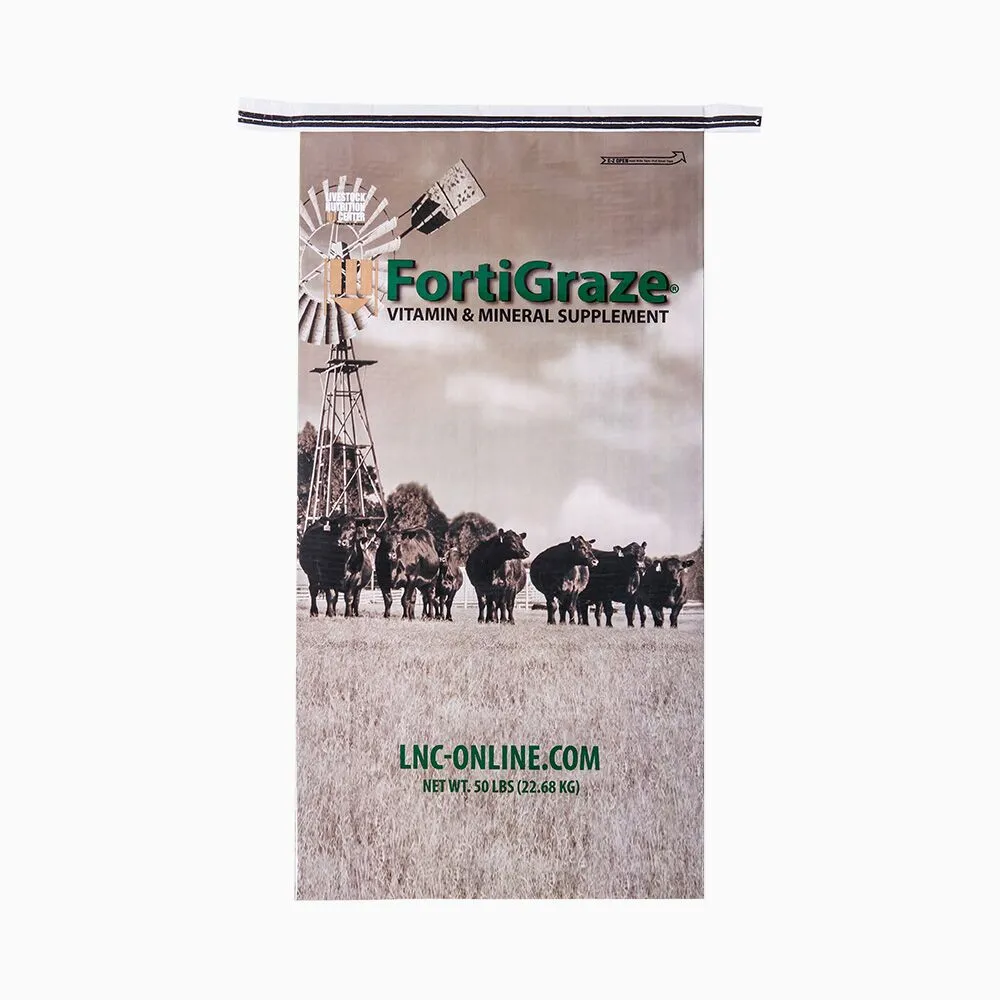
- Key Features of Poly-BOPP Bags in Fertilizer Applications
- Solving Key Packaging Challenges
- Tailoring Bag Designs to Fertilizer Types
- Why Choose Laminated and Waterproof Woven Bags for Fertilizer Packaging?
- Example Specifications
- Additional Considerations for Bag Selection
- Practical Benefits for Manufacturers and End Users
- Innovations Driving Poly-BOPP Bags Forward
Poly-BOPP Bags, also referred to as BOPP Woven Bags or Poly-BOPP sacks, have become a cornerstone in the packaging industry, particularly for chemical fertilizers such as urea, NPK compound fertilizers, and other agricultural supplements. These bags provide unparalleled durability, moisture resistance, and versatility. As highlighted in our insights on Poly-BOPP Bags advancements and the craftsmanship behind BOPP Woven Bags, they offer tailored solutions to meet the dynamic needs of agricultural packaging.
Key Features of Poly-BOPP Bags in Fertilizer Applications
Packaging chemical fertilizers presents challenges such as moisture control, chemical resistance, and structural integrity. Poly-BOPP Bags meet these challenges with their unique properties:
- Moisture Resistance
Fertilizers like urea are highly hygroscopic, making moisture a critical concern. Laminated Woven Bags, often referred to as Waterproof Woven Bags, feature advanced lamination to create a moisture barrier. This ensures product integrity during storage and transportation. - Chemical Stability
Fertilizers often have corrosive properties, which can deteriorate traditional packaging. Poly-BOPP materials are resistant to chemical reactions, extending the shelf life of the contents. - Leakproof Design
The multi-layered structure of Leakproof Woven Bags ensures no seepage or leakage, even under rough handling conditions. - UV Protection
For fertilizers stored outdoors, UV resistance is crucial. Laminated BOPP layers shield the contents from harmful UV rays, preventing degradation. - Customizable Strength and Capacity
With a wide range of weights and dimensions available, Poly-BOPP sacks can be tailored to meet specific packaging needs, from 5kg retail bags to 50kg industrial sacks.
Solving Key Packaging Challenges
Chemical fertilizers require specialized packaging to address five primary concerns: moisture, heat, sealing, corrosion, and weather conditions. Here’s how BOPP Woven Bags excel:
| Challenge | Solution with Poly-BOPP Bags |
|---|---|
| Moisture Control | Lamination and waterproof coatings ensure complete protection. |
| Heat Dissipation | Ventilated woven designs allow airflow without compromising contents. |
| Sealing Efficiency | Heat-sealable properties enhance leak prevention. |
| Corrosion Resistance | Chemically stable polymers safeguard against fertilizer-induced damage. |
| Weather Resilience | UV-resistant and durable materials protect against sun, rain, and humidity. |
Tailoring Bag Designs to Fertilizer Types
The versatility of BOPP Woven Bags allows customization based on fertilizer types and application environments.
- Granular Fertilizers (e.g., Urea): Leakproof and laminated designs provide moisture barriers and structural strength.
- Powdered Fertilizers (e.g., NPK): Bags with anti-slip finishes and gussets ensure easy stacking and transport.
- Organic Fertilizers: Eco-friendly options with breathable linings support organic certifications.
Why Choose Laminated and Waterproof Woven Bags for Fertilizer Packaging?
- Enhanced Durability: The lamination process combines multiple layers, creating a tough yet lightweight material. This is ideal for bulk handling and logistics.
- Print Customization: The BOPP film allows high-resolution multicolor printing for branding and regulatory labeling.
- Environmental Benefits: Many Poly-BOPP Bags are recyclable, aligning with sustainable practices.
Example Specifications
| Specification | Parameter Range |
|---|---|
| Bag Weight | 50g to 200g (customizable) |
| Capacity | 5kg to 50kg |
| Lamination Thickness | 20–50 microns |
| UV Resistance | Up to 6 months (customizable) |
| Printing Options | Up to 10 colors, glossy/matte finish |
Additional Considerations for Bag Selection
When selecting the optimal BOPP Woven Bags for fertilizers, customers should evaluate:
- Packaging Environment: For high-humidity areas, prioritize waterproof and laminated designs.
- Handling Requirements: Bags with anti-slip properties and handles enhance user convenience.
- Storage Conditions: Opt for UV-stabilized materials for outdoor storage.
- Regulatory Compliance: Custom printing ensures adherence to local and international packaging laws.
Practical Benefits for Manufacturers and End Users
- Cost Efficiency: Lightweight yet robust designs reduce transportation and storage costs.
- Ease of Handling: User-friendly features like sewn-open or valve options streamline filling and emptying processes.
- Brand Differentiation: High-quality printing capabilities offer a competitive edge in retail markets.
By addressing these aspects, BOPP Woven Bags not only protect the product but also add value to the supply chain.
Innovations Driving Poly-BOPP Bags Forward
The future of Poly-BOPP Bags lies in further innovations, such as:
- Anti-microbial Coatings: Enhancing hygiene in agricultural and food applications.
- Biodegradable Films: Developing eco-friendly alternatives to meet regulatory standards.
- Integrated Sensors: Embedding moisture-detection technology for real-time monitoring.
Poly-BOPP sacks remain an indispensable choice for fertilizer manufacturers, ensuring that their products reach end-users in optimal condition while contributing to operational efficiency. This innovative and adaptable solution demonstrates why BOPP Woven Bags are a staple in modern agricultural packaging.